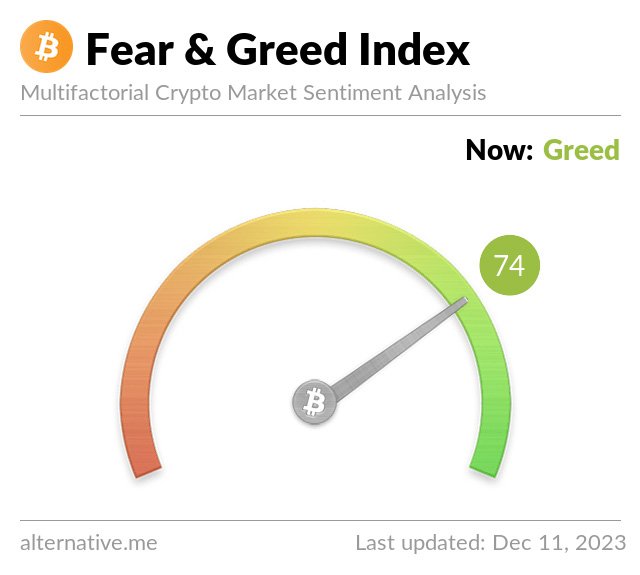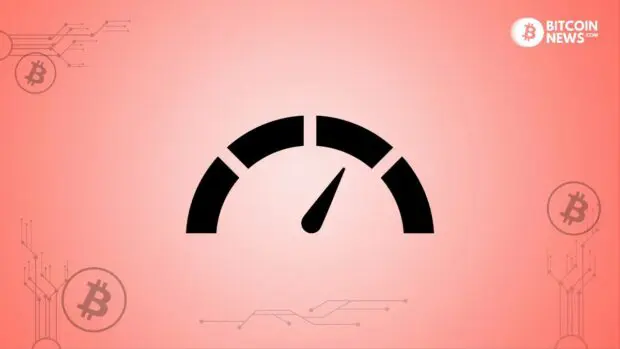The Fear Greed Index is a popular tool used by investors to gauge the market’s emotional temperature. It operates on a simple principle: when extreme fear permeates the market, it often signals that investors are excessively apprehensive. Conversely, extreme greed may suggest that the market is overextended and could be on the cusp of a correction. The fear & greed index analyzes a variety of data, including market volatility, momentum, options markets, junk bond demand, stock price breadth, and market surveys.
Fear Greed Index: Application to Bitcoin
Bitcoin’s price is heavily influenced by investor emotion and sentiment due to its high volatility and status as a relatively new asset class. The Fear & Greed Index captures the overall mood among Bitcoin investors on a scale from “Extreme Fear” to “Extreme Greed.”

During periods of Extreme Fear, when prices have often fallen sharply, long-term Bitcoin believers can strategically accumulate more Bitcoin at discounted prices, confident in its foundational strengths. Meanwhile, when the index shows Extreme Greed, prices may be overextended from overly optimistic sentiment.
Savvy Bitcoin investors can use the Fear & Greed Index as a contrarian indicator to determine when the market may have become irrationally pessimistic or euphoric. For example, high fear may signal investors are irrationally pessimistic, while high greed could mean investors are getting carried away with excessive optimism.
By gauging overall investor sentiment, the Fear & Greed Index serves as an invaluable tool for Bitcoin investors looking to tune their strategies, capitalize on opportunities, or simply better understand the reasoning behind Bitcoin’s famous volatility swings. It shines an interpretive light, helping investors make more educated decisions amidst the stormy seas of Bitcoin’s dynamic market.

HODL Waves
The forces shaping Bitcoin’s value extend far beyond mere sentiment. They encompass a diverse array of elements such as breakthroughs in technology, variations in adoption rates, fluctuations in regulatory landscapes, and broader macroeconomic shifts. While this index offers a momentary glimpse into the collective emotional state of the market, it ought not to be the exclusive cornerstone of investment strategies.
Moreover, investors should deeply consider the inherent qualities of Bitcoin – its decentralized framework, finite supply, and escalating recognition as a reliable store of value. These core attributes help explain why many Bitcoiners leverage the Fear & Greed Index as a timing tool for acquisitions but adopt a steadfast approach to holding.
The concept of ‘hodl waves’ within the Bitcoin community is a testament to this sentiment – a reflection of a deep-seated conviction that the day might arrive when Bitcoin’s value transcends any fiat currency equivalence, making its holders disinclined to exchange it for traditional currency. Such a perspective underscores the unique ethos of Bitcoin and its steadfast community, highlighting a collective belief in its long-term ascendancy and resilience as a decentralized financial asset.
Conclusion
In essence, the Fear & Greed Index is a valuable tool for understanding market sentiment, particularly in volatile markets like Bitcoin. However, it should be used in conjunction with other analytical tools and fundamental analysis to make informed investment decisions. As Bitcoin continues to mature as an asset class, tools like the Fear & Greed Index will play a vital role in navigating its market dynamics. Remember, while the index provides insights, it’s crucial to conduct your own research and verify for yourself.
FAQ
What is the Fear u0026amp; Greed Index, and how does it work?
The Fear u0026amp; Greed Index is a market indicator used by investors to assess emotional sentiment. It analyzes factors such as market volatility, momentum, options markets, junk bond demand, stock price breadth, and market surveys to gauge investor fear or greed.
How is the Fear u0026amp; Greed Index applied to Bitcoin?
Bitcoin’s price is influenced by emotion and sentiment, and the Fear u0026amp; Greed Index reflects the mood among Bitcoin investors on a scale from u0022Extreme Fearu0022 to u0022Extreme Greed.u0022 It helps investors understand when the market is excessively pessimistic or overly optimistic.
What does u0022Extreme Fearu0022 or u0022Extreme Greedu0022 indicate in the context of Bitcoin prices?
u0022Extreme Fearu0022 may suggest discounted buying opportunities for long-term Bitcoin believers, while u0022Extreme Greedu0022 could indicate overextended prices and potential correction due to overly optimistic sentiment.
How can Bitcoin investors use the Fear u0026amp; Greed Index?
Savvy investors use the index as a contrarian indicator, helping them identify irrational pessimism or euphoria in the market. It aids in making informed decisions and capitalizing on opportunities.
Is the Fear u0026amp; Greed Index enough for Bitcoin investment decisions?
No, it should be used in conjunction with other analytical tools and fundamental analysis. The index offers a momentary glimpse into market sentiment but should not be the exclusive cornerstone of investment strategies.
What are bitcoin ‘hodl waves’?
‘Hodl waves’ reflect the deep-seated conviction among Bitcoin holders that its value may surpass traditional currency equivalence. It signifies a belief in Bitcoin’s long-term ascendancy and resilience as a decentralized financial asset.
What factors influence Bitcoin’s value?
Bitcoin’s value is influenced by technology breakthroughs, adoption rates, regulatory landscapes, and broader macroeconomic shifts, extending beyond market sentiment captured by the Fear u0026amp; Greed Index.










